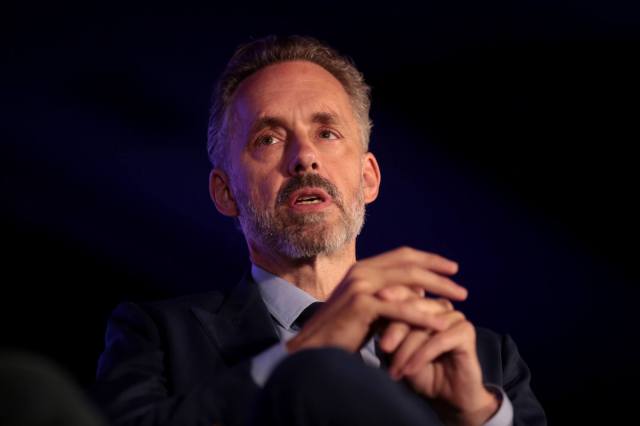Credit: Flickr

Jordan Peterson is not a natural-born citizen of the United States of America. He is therefore ineligible to serve as the President of that great nation.
But what if he’d been born south of the border – in Montana, say, not Alberta? Assuming that the hypothetical American Peterson were otherwise similar to the actual Canadian one, then I reckon he’d be coming under some pretty intense pressure to run for President.
American politics right now is all about breaking the mould. That’s how Donald Trump got elected, it’s how Bernie Sanders almost got elected and, only last week, it’s how 28-year-old Alexandria Ocasio-Cortez rocked the Democratic establishment.
Typically, such upsets are pulled off from the populist right or the radical left – and by polarising the electorate along ethnic and generational lines. But there are other possibilities. Like Emmanuel Macron in France, America could swing behind someone of a more centrist hue – as long as he or she were seen as a challenger to the establishment, not part of it.
Moreover, America’s cultural divides aren’t nearly so set in stone as one might think. For instance, one might assume that the Democrats can bank on the support of the Millennial generation. But according to Cas Mudde in the Guardian, the sands are shifting:
“…it may take liberals by surprise to hear that a recent Reuters/Ipsos mega poll of 16,000 respondents, found that the Democrats are losing ground with millennials. While millennials still prefer the Democratic party over the Republicans, that support is tanking. In just two years, it dropped sharply from 55% to 46%. Meanwhile, their support for Republicans has remained roughly stable in the past two years, falling from 28% to 27%.”
Closer examination of the figures shows an even more dramatic shift among white male Millennials:
“Today, as many white millennials support the Democrats as the Republicans (each 39%). Just two years ago, Democrats still had a 14% lead over Republicans among white millennials. The trends are even more pronounced among white male millennials. Today, this group favors the Republicans over the Democrats by a staggering 11%. In 2016, Democrats led white male millennials by 12%.”
The precise demographics of the Millennial shift might at first sight appear to confirm other cultural divides. However, those divides are artificially reinforced by a Republican President who has gone out of his way to repel women and ethnic minorities.
One can also view the shift in white male Millennials as a reaction against the ‘woke’ left’s pathologisation of ‘whiteness’ and ‘maleness’. But as the post-modern Maoists work their way down the hierarchy of privilege – targeting white women, black men and the less fashionable letters in LGBTplus – it might not be long before other groups of voters also push back against the self-consuming nature of ‘intersectionality’.
Finally, it’s worth pointing out that the Millennials aren’t the youngest group of voters anymore. Post-Millennials are now reaching voting age, and their political loyalties can’t be taken for granted either. If they can be engaged at all, it won’t be through the creaking apparatus of conventional politics.
For all of these reasons, there is a huge opportunity waiting for a new kind of leader: one with the guts to take on the post-modern left; the heart to reach out to all Americans; and the smarts to use technology to bypass the Beltway establishment.
In a parallel universe, an American-born Jordan Peterson is doing this right now. In this one, we may have to wait a while.










Join the discussion
Join like minded readers that support our journalism by becoming a paid subscriber
To join the discussion in the comments, become a paid subscriber.
Join like minded readers that support our journalism, read unlimited articles and enjoy other subscriber-only benefits.
Subscribe